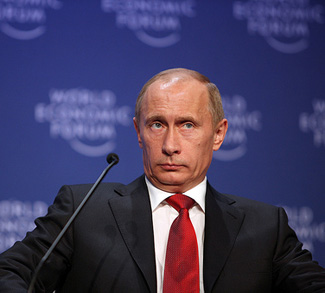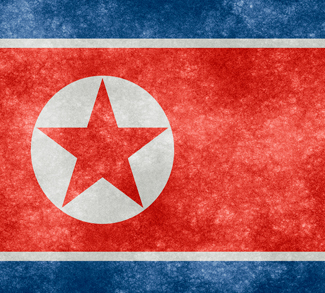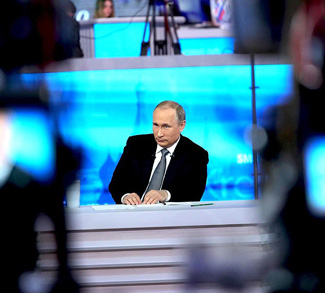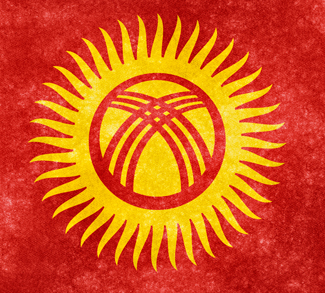In early October 2011, the Russian Prime Minister Vladimir Putin, who later became the country’s president, wrote a now-famous newspaper article “A New Integration Project for Eurasia: A Future That is Born Today”. In this pre-electoral piece (it was already known that Putin, not Medvedev, would run for president on behalf of the United Russia party), Russia’s strongman proposed the creation of a vast economic bloc known as the Eurasian Union which, in Mr. Putin’s view, would enable its member states to “become leaders of global growth and civilized progress, and to attain success and prosperity”. This new entity of regional integration in the post-Soviet space should build not only on the experience of the Commonwealth of Independent States (CIS), but also on its two successors: the Eurasian Economic Community (EurAsEc) created in 2000 and the Customs Union between Russia, Kazakhstan, and Belarus formalized ten years later [1].
Interestingly, the idea of a Eurasian Union was first proposed not by Putin, but by Kazakhstan’s President Nursultan Nazarbayev back in 1994. At the time, the Kazakh leader strongly defended the inclusion of five post-Soviet states–Russia, Kazakhstan, Belarus, Kyrgyzstan, and Tajikistan–into the Union’s permanent framework, while its further expansion would encompass Ukraine, Azerbaijan, Armenia and even such autonomous territories as Georgia’s South Ossetia and Abkhazia as full-fledged members. Unfortunately for Nazarbayev, Russia’s flirting with the West [2], its enormous economic difficulties [3] as well as Boris Yeltsin’s lukewarm attitude towards Russia’s CIS partners prevented such a project from materializing and put other integration plans on the backburner for years.
As the global competition for markets and resources has intensified in this last decade, with China recently surpassing Japan as the world’s second largest economy and the United States and EU countries struggling against the specter of recession, Moscow has manifestly set out on a course of accelerated rapprochement with its former satellites. By consolidating its ties with Belarus and Kazakhstan, and also by practicing a stick-and-carrot approach to Ukraine and Kyrgyzstan, Russia expects to strengthen its strategic neighborhood and secure access to local markets. However, Moscow also aspires to the role of a regional hegemon, decades after the collapse of the Soviet empire.
Russia’s Strategic Neighborhood
Kazakhstan and Belarus have traditionally been Russia’s best partners and allies in the former USSR. According to RAND experts writing about the Russian foreign policy in 2009, “[…] Kazakhstan and Belarus are frequently recognized as Russia’s closest friends, whereas the three Baltic states and Georgia are seen as unfriendly toward Russia [4].” The strengthening of ties with each of these two countries is considered by the Kremlin as a prerequisite for the further expansion of its geostrategic influence over to other neighboring territories, such as Ukraine and Moldova in Europe or Uzbekistan and Kyrgyzstan in post-Soviet Central Asia. Both Kazakhstan and Belarus actively participate in the Russia-led Collective Security Treaty Organization (CSTO) created in 2002 for the purpose of jointly confronting security risks and challenges to domestic stability. They are also the primary consumers of Russian military technologies and equipment, benefiting from special contracts directly concluded among dozens, if not hundreds, of industrials.
Since 1992, Russia and Belarus have been progressively building common statehood. In April 1997, the two countries formalized the establishment of a Russian-Belorussian Union which has been formally called the Union State since 2000. In the context where the Belorussian President Alexander Lukashenko increasingly came under fire from human rights organizations, NGOs and Western governments for his undemocratic handling of the country’s political life [5], Minsk’s economic dependence on Moscow has rapidly grown into a difficult and ambiguous relationship. This is especially true in the energy field, because Belarus has no proper energy potential and needs to import hydrocarbons to sustain its industries. While Russia was slowly paving its way towards full membership in the World Trade Organization [6], it had to progressively abandon price privileges for its external partners, including Belarus. Instead, Russia has continued to provide considerable subsidies, for example by way of exempting Belarus-directed oil products from export duties. In early 2011, Vladimir Putin promised over $4 billion in direct subsidies to the Belorussian government, cementing Minsk’s dependence on Russia’s good will in economic matters. According to some Belarus experts, “one of the perverse effects of the subsidization of the Belarusian economy through energy subsidies has been the preservation of an economic model that is incapable of dealing successfully with the effects of an eventual reduction in Russian economic support [7].” By tying Belarus to its apron, Russia maintains the allegiance of Belorussian authorities to its foreign policy goals.
The case of Kazakhstan is different and Russia’s policies towards this Central Asian republic are thus considerably subtler. Once considered to be a second Saudi Arabia due to the vastness of its estimated energy reserves [8], Kazakhstan remains Central Asia’s most politically stable and economically developed country. Although its population is only 16.6 million people (2012), as compared to Uzbekistan’s thirty-million, Kazakhstan represents unique transit opportunities, as it directly connects Europe to Asia and, geopolitically speaking, is situated in what Sir Halford Mackinder once qualified as “the Eurasian heartland [9].” By consolidating its ties with Kazakhstan, Russia not only gets access to its enormous territory and favorable geographic location, but can also promote its interests further south, establishing strategic economic connections with the Middle East and the Persian Gulf. While Kazakhstan’s oil and gas deposits are frequently cited as the core of Russia’s economic interests in the country, this country is also crucial for ensuring security on Russia’s southern borders.
Russia’s Strategy for Expanding Regional Influence
Russia’s geopolitical ambitions are in no way limited to two of its neighbors, Kazakhstan and Belarus. In the spring of 2011, Ukraine confirmed its desire to enter into discussions with the Russia-led tripartite Customs Union, after the Kremlin had hinted at a possibility of reducing the weight of Ukraine’s energy bills by almost $8 billion per year for Russian gas imports. Almost simultaneously with its Ukrainian counterpart, the Kyrgyz Government launched official talks on their country’s eventual accession to the Customs Union, advertising the presumably enormous economic benefits its economy would get from a freer access to the Russian, Kazakh, and Belorussian domestic markets.
Ukraine has long been Russia’s most troublesome partner, mostly due to the ambivalent policies of its second president Leonid Kuchma (1994-2005), who once proclaimed Ukraine’s intent to join NATO while Russia’s relations with the North Atlantic Alliance were particularly strained. Russia’s interest in keeping Ukraine in its sphere of influence is twofold. On the one hand, Ukraine’s Crimea peninsula hosts a Russian navy base whose lease term was extended in 2010 by a special agreement between Presidents Medvedev and Yanukovych, despite an unresolved gas dispute [10]. This facility provides Moscow with strategic military capabilities in an area that Russia once considered crucial for the security of its southwestern borders and its geopolitical influence near the “warm seas.” On the other, Ukraine is Russia’s gate to Europe, whereas Poland and the Baltic states remain traditionally hostile towards the Kremlin for historical reasons [11]. Furthermore, Ukraine represents a promising market of 45 million potential consumers, in the context where Russia seeks to diversify its own economy.
As regards Kyrgyzstan, the importance of this Central Asian country can in no way be compared to that of Kazakhstan. While its economy is underdeveloped because of structural difficulties (dominant but inefficient agriculture, scarce energy opportunities, poor infrastructure), Kyrgyzstan is also inherently unstable: it lived through two popular revolutions in five years’ span [12], both of them triggered by rampant corruption and the total neglect of ruling elites towards an ever growing population. Still, Kyrgyzstan’s place on the Central Asian landscape is no less unique because of its proximity to Afghanistan. Following the launch of NATO’s military operation against the Taliban in 2001, Kyrgyzstan became one of Washington’s strategic partners in the region and is now hosting a U.S. military facility on its territory (the Manas Air Transit Center). At the same time, it is home to Russia’s Kant airbase which may become Moscow’s geostrategic springboard after NATO forces leave Afghanistan in 2014. Therefore, Kyrgyzstan’s participation in the Customs Union and eventually the Eurasian Union propelled by Moscow is dictated by purely political reasons, as the utility of its membership for Russia is insignificant in economic terms. According to Erica Marat, a prominent Central Asia expert, “[By] joining the Customs Union, Kyrgyzstan voluntarily submits to Russia’s stronger political control” and may even suffer economic damage, because “[as] a WTO member for over a decade, Kyrgyzstan has much lower import and export tariffs compared to what the Customs Union has to offer”.
Russia’s Eurasian Union as a way to Counter Western and Chinese Interests
Relations between Russia and the West have never been simple. They particularly soured in December 2011, when Russia was rocked by powerful street protests demanding the annulment of recent parliamentary elections, largely accused of fraud both in Russia and abroad. The situation further deteriorated after Vladimir Putin was elected to the presidency later in March 2012, with most Western media forecasting his presence at the top of Russia’s “vertical of power” for another twelve years (that is two consecutive presidential terms). While pro-government Russian media speculated that the protest movement had been funded by the U.S. State Department and locally implemented by a newly appointed ambassador to Moscow, Michael McFaul [13], U.S.-Russian relations also suffered a major setback because of Washington’s declared plans to pursue a missile defense shield project in Eastern Europe. Therefore, the policy of “reset [14]” implemented during the Obama and Medvedev presidencies was immediately put at risk by Vladimir Putin’s return to power. Russia’s relationship with the European Union is not any more positive, as Brussels frequently accuses Moscow of flouting human rights and freedoms and using repression against the political opposition.
In this context, Russia deems itself encircled in the west by utterly hostile or openly unfriendly nations and seeks to strengthen its European frontiers by consolidating its influence over Ukraine and Belarus, two semi-European states whose quest for identity is often split between the EU/NATO and Russia. While Belarus represents a smaller challenge, with its current president Lukashenko constantly looking for Russia’s support in the face of bitter criticisms voiced by Brussels, Ukraine remains profoundly undecided. Violent clashes in the Ukrainian parliament over a recently adopted language bill have clearly demonstrated the country’s fears over a possibility of being definitively overtaken by its Russian neighbor [15].
At the same time, Russia remains deeply suspicious of China’s growing influence in Central Asia, despite both countries’ strong economic ties and frequently shared political interests (throughout the so-called Arab Spring, Moscow and Beijing firmly stood together in defending the “status quo” against a domino-like string of upheavals in the Middle East and North Africa). China already surpassed Russia as Kazakhstan’s top economic partner, with the overall trade turnover between Astana and Beijing reaching an unprecedented level of $20 billion in 2010. It also managed to strengthen its energy ties with Central Asian republics, namely via the construction of several oil and gas pipelines, such as the Turkmenistan-Uzbekistan-Kazakhstan-China pipeline inaugurated in December 2009. Several of Russia’s Central Asian partners have already become part of the Chinese sphere of influence: both Uzbekistan and Turkmenistan chose China as their priority economic partner due to Beijing’s willingness to import most of their natural gas production. While Turkmenistan remains politically neutral [16], Uzbekistan even attempted a withdrawal from the Russia-controlled CSTO in June 2012, citing irreconcilable difficulties on the Afghan policy, but in reality to ease Moscow’s political control. In this regard, Russia’s move towards a closer cooperation with both Kazakhstan and Kyrgyzstan, still out of China’s direct sphere of influence, reflects its ambition to counter the growing Chinese presence in Central Asia, which once belonged to Russia’s exclusive geostrategic domain.
Russia’s Renewed Drive for Regional Hegemony.
In his October 2011 article for the Izvestia newspaper, Vladimir Putin wrote as follows: “The Europeans spent forty years moving from the European Coal and Steel Community to a full-fledged European Union. The establishment of the Customs Union and the Common Economic Space [17] is advancing far more dynamically, because we are considering the experience of the EU and other regional organizations”. By pursuing its project of a Eurasian Union (Putin once said that such a union might be created before 2015), Russia seeks to assert its economic and political influence in a shorter period of time, before the situation becomes too favorable for either of its global and regional competitors. Strangely enough, Vladimir Putin pays no attention in his article to the current problems of Eurozone countries which rather inadvertently brought to light an unpleasant truth: states with different levels of economic development and dissimilar political cultures can hardly thrive together. However, this intentional omission reveals something very important: Russia is actually seeking a political union, where its voice will be the only one heard and other partners will only have to rubberstamp already prepared decisions.
Some experts, like Nikolas K. Gvosdev writing for the National Interest, believe that by promoting its Eurasian Union agenda, Moscow is trying to rebuild a new Russian empire, namely when he says that “Putin would like to see more of the old Soviet (and Imperial-era) linkages restored, with trade, resources and labor flowing between Russia and its neighbors”. Others assert, instead, that Russia’s policy towards its neighbors will be dramatically different, with the Russian-Ukrainian political scientist Andrey Okara speaking of a “trade quasi-empire”, based on each country’s acceptance of Moscow’s dominance and on the absence of other alternatives, clearly in the Kremlin’s favor. Russia’s Eurasian Union is a manifest bid for the establishment of Russia as the only Eurasian superpower whose influence equally stretches to the West and to the East. However, contrary to how Moscow’s domination evolved in the past, Russia will now have to develop more of its own “soft power”, to use more frequently its diplomacy instead of brutal force, and to demonstrate its skills at being more competitive than its Western and Chinese rivals.




